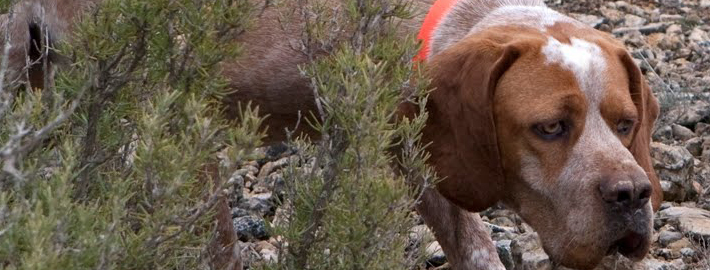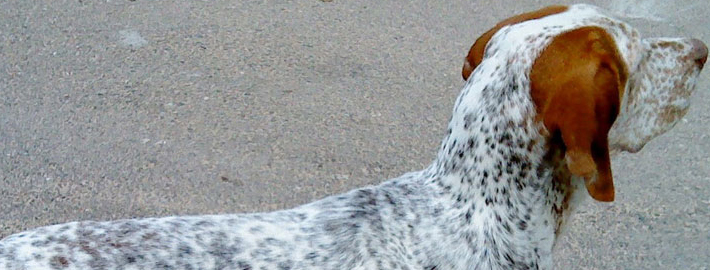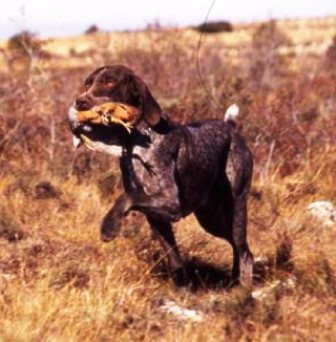What makes the Pachon Navarro Unique?
The Pachon Navarro is a breed of gundog, native to Navarre, Spain, located in the foothills of the Pyrenees Mountains. The breed is also known as the Old Spanish Pointer, but actually it is one of several native Spanish breeds directly descended from the now extinct Old Spanish Pointer. Other direct descendants are the Majorcan Pointer, the Perdiguero de Burgos, and the Perdiguero Gallego. However, of the four descendants, the Pachon Navarro, most closely resembles their shared ancestor. The Panchon Navarro is also known as the Old Spanish Pointer, Perdiguero Navarro, Navarro Pointer, and Pachon De Victoria.
Breed Groups
Page Contents
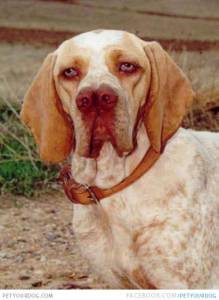
Is the Pachon Navarro Right For You?
The Pachón Navarro is a Spanish hunting dog (also known as: Old Spanish Pointer, Perdiguero Navarro, Navarro Pointer, Pachón de Victoria, Nafarroako eper txakur) which has the unusual feature of a split or double nose. It was believed that this unusual nose gives it extra sensitivity to smells, a primary reason it was chosen as a hunting dog. Today it is known that this feature is only a cosmetic difference.
In two photographs, of what has been called the Double-nosed Andean tiger hound, which were widely published in 2006 and 2007, there are two Andean dogs that are believed to be remotely descended from the Pachón Navarro and who bear an unusual “double nose”. It appears to be a normal dog’s nose, but with the nostrils separated by a band of skin and fur dividing the nose all the way to the dog’s upper lip. In photographs at a Pachón Navarro website, the split nose is much less conspicuous than it is on the Andean dogs.
In 5 Words
- Determined
- Energetic
- Eager
- Loyal
- Intelligent
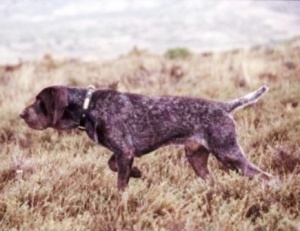
Characteristics
Learn About the Pachon Navarro
Description
General Description
Pachon Navarros are large, stout dogs with rectangular shaped bodies and short, but sturdy, limbs; these dogs possess great physical strength. Their height, measured from withers to ground, must be at least 18 3/4 inches and no more than 23 1/2 inches. The average height for males is 21 1/2 inches and 20 1/2 inches for females. These dogs weigh between 44 pounds and 66 pounds. The vast majority of Pachon Navarros have short fur of a hard texture. The rare, long haired dogs of this breed have silky coats. Their coats are usually a color combination of black and white, brown and white, liver (a darker shade of brown) and white, or orange and white. They may have patches or ticking (that is, freckled with a certain color) on the coats, or the dog’s coat may be monochrome or tri-colored. Their thick skin is somewhat detached in areas, such as where it forms a double chin. The skin appears thinner in some areas of the body. The large head of the Pachon Navarro is boxy and the skull is wide. These dogs have broad foreheads, expressive eyebrows, and well defined stops. The length of their faces is less than the length of their skulls. They have long ears that are set low on their heads, but in a line above their eyes. They carry their ears high and wide; the ears fall forward, extending beyond the corners of the mouth. The ears are wide and flat at the base, with a rounded tip. Their large, round eyes are chestnut brown and wide set, but retain a forward facing gaze.
Short History of the Pachón Navarro
Pachón Navarro is a Spanish breed of dog originally from Navarre, This is a sample dog used in small pen and hair game.
Scholars of the race, the popularity of this breed of dog reached its peak popularity in the pose, especially among the Spanish nobility in the 18th and 19th century. After the Spanish Civil War, the race was on the verge of extinction.
It was then, When a race enthusiasts decided to begin work on the recovery of the same. The first step was touring the country and locate all copies of Pachón Navarro who had survived the social disaster.
That is why, the today Pachón Navarro is a product of recovery through from copies of old dog sample Spanish (Old Spanish Pointer), that’s the theory that keep classical authors during the last centuries.
In fact, Old dog sample Spanish, It is one of the seven races that appears as a show dog in the classification made by the Royal Canine society of Spain, in the year 1911.
In the documentation of its origins, Some theories pose Pachón Navarro descended from the Talbot Hound and other hunting dogs, whose origin lies in the 12th century.
Temperament
The Pachon Navarro is intelligent, friendly, loyal, and brave. They are a large, athletic breed and need vigorous daily exercise. These dogs possess a strong hunting instinct, but also make excellent human companions. The Pachon Navarro has a great temperament for a family dog; they are gentle and affectionate, with happy dispositions. When indoors, they are docile, preferring to be near their human family; this breed will not be happy living outside away from its people. They are friendly toward people in general, and get along well with most other dogs. Small noncanine pets, especially birds, will not fare well with a Pachon Navarro in the house, because of their hunting instinct for birds and small game. These dogs do not pick fights with other canines, but will defend what is theirs, if necessary. Their bravery and loyalty make them good watchdogs.
Caring for Your Pachon Navarro
Grooming & Bathing
The short coat should be easy to maintain with occasional brushing and bathing when needed.
Exercise & Training
This dog that needs lots of exercise, There will always be a torrent of energy that need to spend, even running through the fields.

